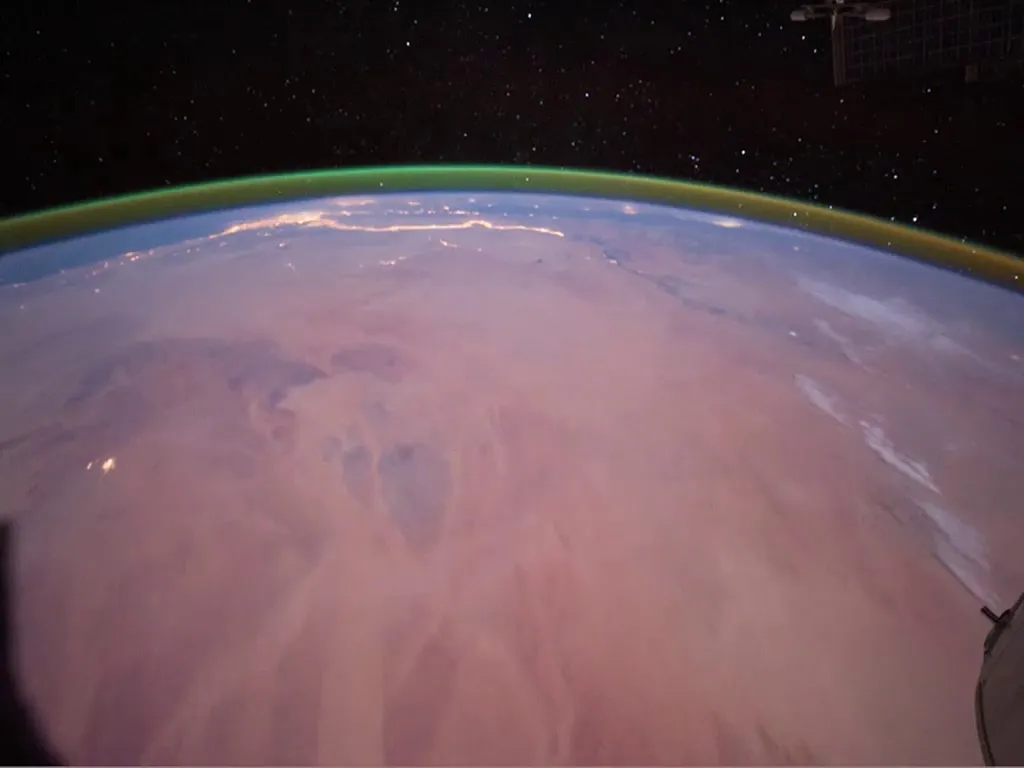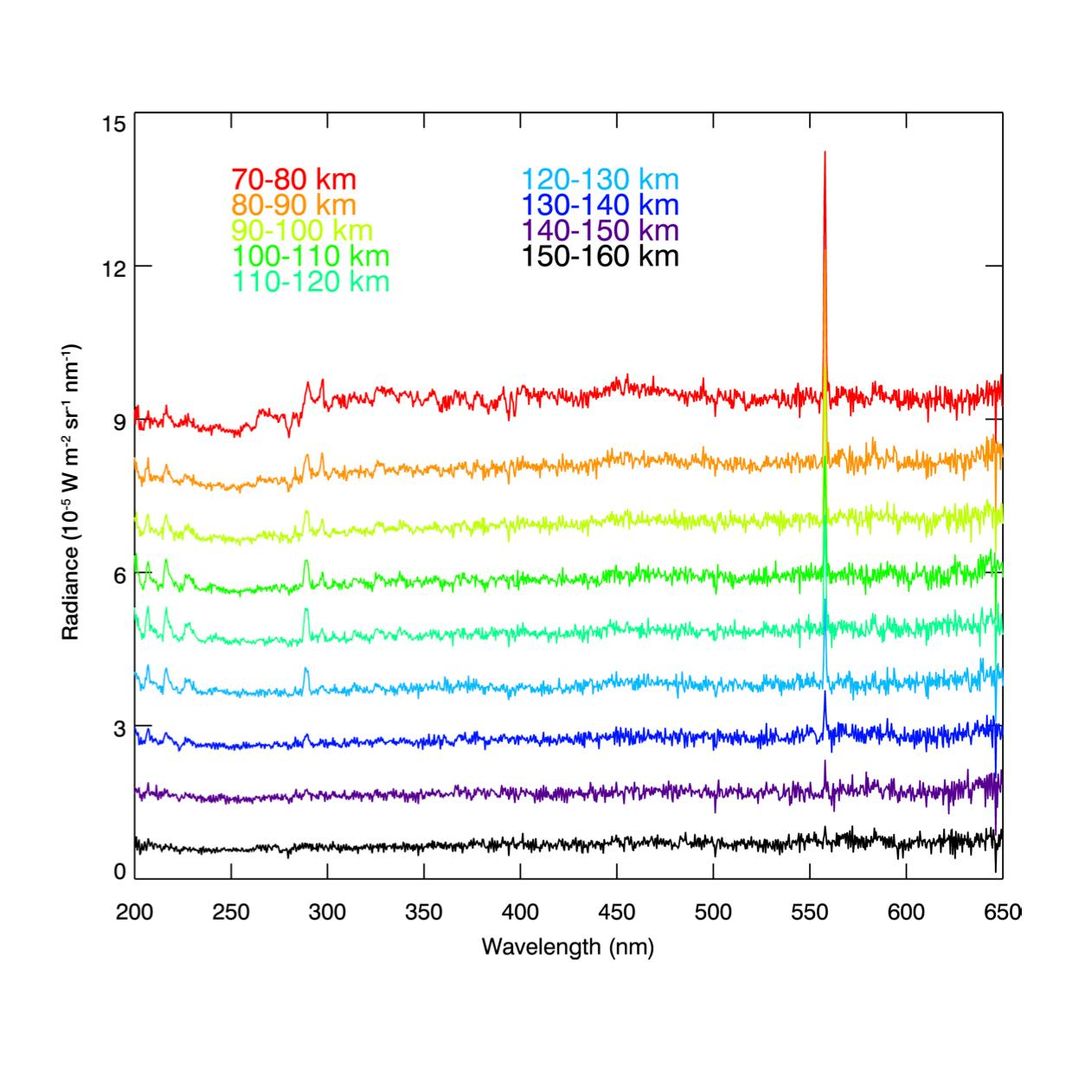Green Glow Detected in Mars’ Atmosphere
The emerald light resembles the glow emitted in Earth’s atmosphere
/https://tf-cmsv2-smithsonianmag-media.s3.amazonaws.com/filer/33/6d/336ded1d-bf6f-4a2d-a676-d28ae0ad8ee4/artists_rendering_of_green_airglow_on_mars.jpg)
The Red Planet’s atmosphere glows green, scientists announced this week.
Scientists have long known that Earth’s upper atmosphere glows a bright emerald shade and have photographed the phenomenon, known as airglow, from the International Space Station. But spotting the airglow on Mars is the first time the phenomenon has been detected on a planet other than Earth, reports Jonathan Amos for BBC News.
The European Space Agency’s ExoMars Trace Gas Orbiter spotted Mars’ upper atmosphere emitting a greenish glow, it announced this week in a statement. The team published a study featuring their discovery in the journal Nature Astronomy this week.
“[T]his emission has been predicted to exist at Mars for around 40 years—and, thanks to TGO, we’ve found it,” says Jean-Claude Gérard, lead author on the study, in a statement.
Scientists scanned Mars’ atmosphere with a specialized spectrometer at altitudes between 12 and 250 miles above its surface, reports Mike Wall for Space.com. They discovered a green glow at all heights, with an especially strong light emitted at 50 miles above the planet’s surface.
“It’s a nice result,” Manish Patel, who operates the TGO’s Nomad instrument for detecting ultraviolet and visible light, tells BBC News. “You’d never plan a mission to go look for this kind of thing. Today, we have to be very clear about the science we’re going to do before we get to Mars. But having got there, we thought, ‘well, let’s have a look.’ And it worked.”
Earth’s upper atmosphere, or its limb, emits light as its molecules interact in complex ways with the Earth’s surface and energy from the sun. During the day, energy from sunlight excites the molecules of nitrogen and oxygen at the Earth’s upper atmosphere, so that molecules emit light to get rid of excess energy and fall back to their normal state.
The ionosphere, or the region roughly 50 to 400 miles above Earth’s surface, glows different colors depending on the composition of gases in layers of green, purple, yellow and red, according to a NASA statement about airglow from 2018. The brightest airglow happens during nighttime, when collisions between oxygen molecules create a bright green glow.
As Danny Lewis reported for Smithsonian magazine in 2016, scientists estimate that airglow is about one billion times fainter than sunlight. Its presence was first detected in 1868 by the Swedish physicist Anders Ångström, who was fascinated by the rippling aurora borealis. Unlike the northern lights, however, airglow is a bubble of light that glows constantly, although it can be affected by the weather patterns below on Earth, Lewis writes.
Unlike Earth’s oxygen-rich atmosphere, Mars’ is comprised mostly of carbon dioxide (CO2). Mars’ glow occurs from a breakdown in these CO2 molecules. “We modelled this emission and found that it’s mostly produced as carbon dioxide, or CO2, is broken up into its constituent parts: carbon monoxide and oxygen,” says Gérard in a statement. “We saw the resulting oxygen atoms glowing in both visible and ultraviolet light.”
By studying Mars’ airglow, scientists hope to learn more about its atmosphere. This information could aid in the ESA’s next adventure: a 2022 mission to send Europe’s first rover, dubbed Rosalind Franklin, to Mars.
“A good understanding of the atmosphere in this region, and its variation with latitude, time of day, season and dependence on the Solar cycle, is important for the planning of future missions to the surface of Mars,” Håkan Svedhem, another scientist who works on TGO, tells Aristos Georgiou of Newsweek.
“Obviously, all landers have to pass through this region, and here, friction between air molecules and the spacecraft body starts becoming high and generates a lot of heat," Svedhem says. "The design has to be made to properly fit the environment.”
/https://tf-cmsv2-smithsonianmag-media.s3.amazonaws.com/accounts/headshot/nora.png)




/https://tf-cmsv2-smithsonianmag-media.s3.amazonaws.com/accounts/headshot/nora.png)